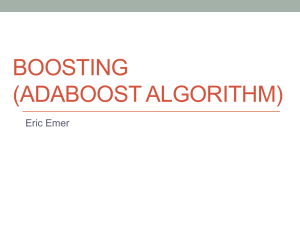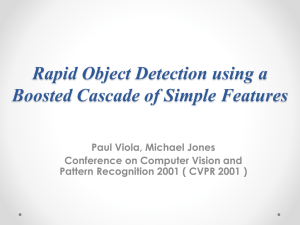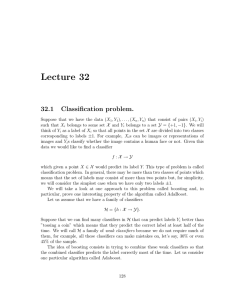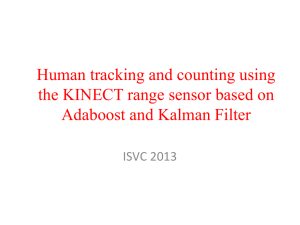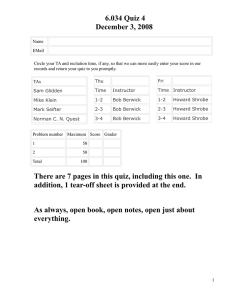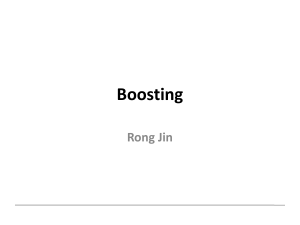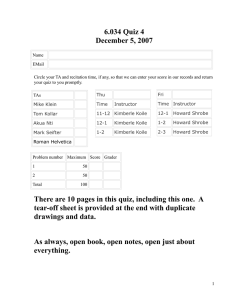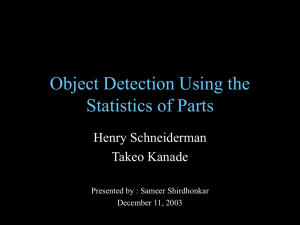Ingrid Daubechies Title: Convergence results and counterexamples for AdABoost and related algorithms. Abstract:
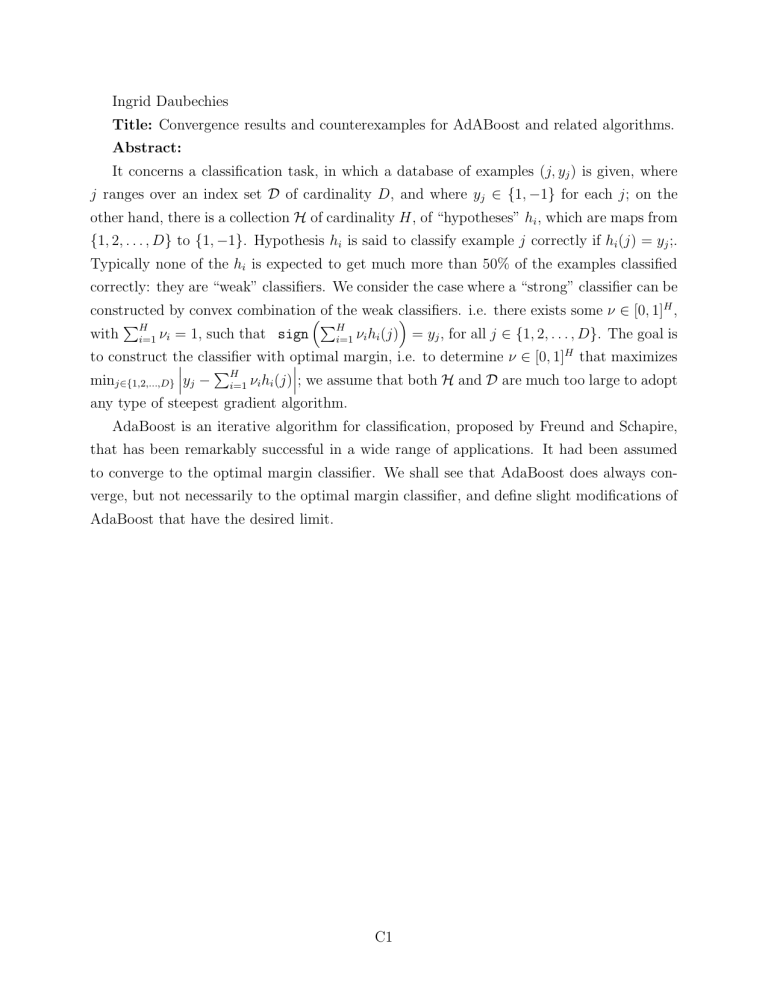
Ingrid Daubechies
Title: Convergence results and counterexamples for AdABoost and related algorithms.
Abstract:
It concerns a classification task, in which a database of examples ( j, y j
) is given, where j ranges over an index set D of cardinality D , and where y j
∈ { 1 , − 1 } for each j ; on the other hand, there is a collection H of cardinality H , of “hypotheses” h i
, which are maps from
{ 1 , 2 , . . . , D } to { 1 , − 1 } . Hypothesis h i is said to classify example j correctly if h i
( j ) = y j
;.
Typically none of the h i is expected to get much more than 50% of the examples classified correctly: they are “weak” classifiers. We consider the case where a “strong” classifier can be constructed by convex combination of the weak classifiers. i.e. there exists some ν ∈ [0 , 1] H , with P
H i =1
ν i
= 1, such that sign
P
H i =1
ν i h i
( j ) = y j
, for all j ∈ { 1 , 2 , . . . , D to construct the classifier with optimal margin, i.e. to determine ν ∈ [0 , 1] H
} . The goal is that maximizes min j ∈{ 1 , 2 ,...,D } y j
− P
H i =1
ν i h i
( j ) ; we assume that both H and D are much too large to adopt any type of steepest gradient algorithm.
AdaBoost is an iterative algorithm for classification, proposed by Freund and Schapire, that has been remarkably successful in a wide range of applications. It had been assumed to converge to the optimal margin classifier. We shall see that AdaBoost does always converge, but not necessarily to the optimal margin classifier, and define slight modifications of
AdaBoost that have the desired limit.
C1


